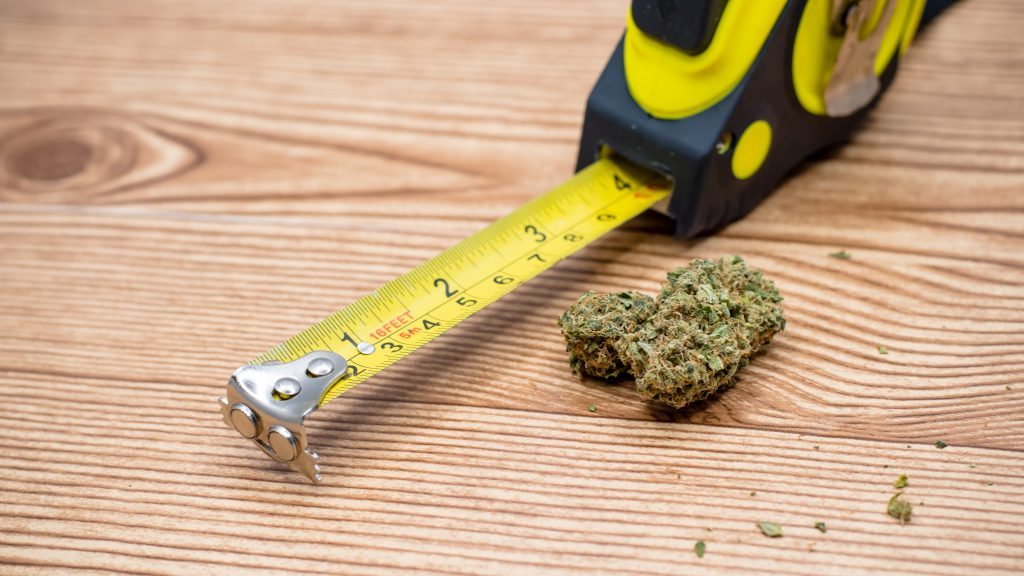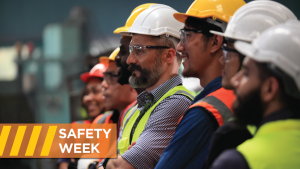Has cannabis use and perception about workplace cannabis use changed since legalization?
That’s the question Dr. Nancy Carnide and a team at the Institute for Work and Health (IWH) is exploring through annual surveys of Canadian workers. In her presentation at the Ontario General Contractors Association (OGCA) and Infrastructure Health and Safety Association (IHSA) Leadership Day March 6, Carnide, an associate scientist with IWH, discussed the preliminary results of comparing worker responses pre and post legalization.
“We’ve established this cohort study of workers that we started four months before legalization and we are following workers for four years essentially to better understand trends and cannabis use patterns and the perception about use among Canadian workers across the country,” said Carnide.
“There hasn’t been a change in the prevalence of workplace cannabis use but one fifth of the workers using cannabis were still reporting use before or at work.”
The first survey was taken in 2018, prior to legalization with the second in 2019. Two more surveys are slated for summer 2020 and 2021.
Overall cannabis use increased from about 35 per cent to about 43 per cent in the past year,
— Dr. Nancy Carnide
Institute for Work and Health
In both samples, there were 11 per cent of respondents from the primary industry which includes construction, agriculture, forestry and mining. Thirty-three per cent identified being in the construction industry. Overall, cannabis use does seem to be increasing, said Carnide.
“We went from about 29 per cent before legalization who reported using cannabis in the past 12 months to about 38 per cent,” said Carnide.
“In the primary industry group we saw that overall cannabis use increased from about 35 per cent to about 43 per cent in the past year. I do need to preface this with the fact that people knew what the topic was so we know that this doesn’t necessarily mean that 43 per cent of primary industry workers across Canada in the population are using cannabis in the past 12 months. It’s probably a bit less than that.”
In terms of frequency of use, she said there has been an increase in less frequent use and a decrease in more frequent use.
“The prevalence of overall use has increased but the never use hasn’t changed,” said Carnide. “The former use people decreased, past year use increased. What that suggests is people who maybe tried it many years ago were trying it again, people who hadn’t tried it ever were really unlikely to try it. The frequency has decreased which suggests that people are just giving it a try.”
In the primary industry group in particular, there is a slightly higher percentage of people who are reporting use to manage some kind of work-related injury or illness.
“About half of past year users said they were using it for some sort of therapeutic reasons…for pain, for sleep, anxiety, stress and those are the things we need to keep in mind, not everyone is using it necessarily just to get high,” said Carnide. “There are people in the workplace that may be using it because they have aches and pains from their work and they need to keep going and that’s really important particularly in this industry.”
Before legalization, researchers found that among past year users, 26 per cent said they were using cannabis before or at work. It dropped to 21 per cent after legalization.
“When we presented this to our stakeholder advisory committee, they scratched their heads and said that’s not what we would expect,” said Carnide. “One thing we need to take into account is that we have this increase in people who are probably trying it out, if they are going to try cannabis, they are very unlikely to try it out right before work.”
The survey also looked at if workers had used two hours before work, at work, on breaks and on the worksite at the end of a shift.
“The big takeaway here is workers think use two hours before work is considered less risky, they don’t think it’s as risky as using it at work,” said Carnide. “The fact that people don’t think it’s as risky is a problem that represents an important education gap.”
On the second survey workers were asked if their employer provided any education or information on cannabis use and its effects. Only 25 per cent of respondents said they did. That was slightly higher in the primary industry at 32 per cent.
“This is an education gap,” said Carnide. “We definitely have to have our policies in place but education is going to be key moving forward to making sure workers, if they are using cannabis, are doing it in a way that is not going to affect the workplace.”
“Education, education, education, I think that’s where we are falling a bit behind,” Carnide added.
The survey also asked workers whether they thought using cannabis for non-medical purposes and using cannabis for medical purposes at the workplace without a medical authorization would be allowed after legalization.
“There is an increase in people saying these two situations would be possibly allowed in some cases. We know that’s not true,” said Carnide. “After legalization you still have to be fit for work, you are not to be using cannabis at the workplace.”
Follow the author on Twitter @DCN_Angela.











Recent Comments
comments for this post are closed